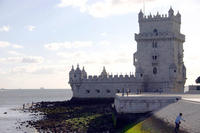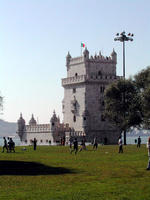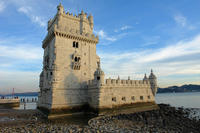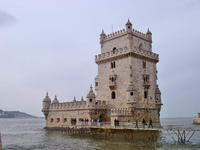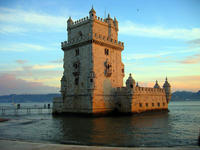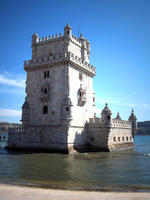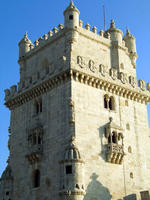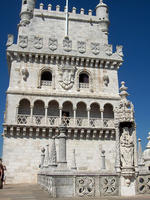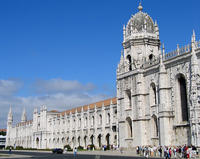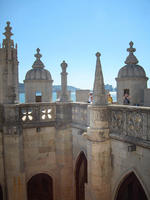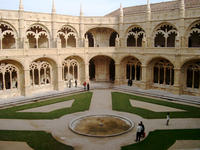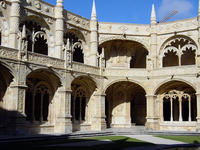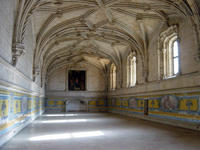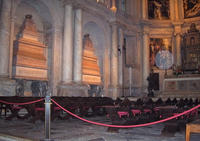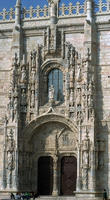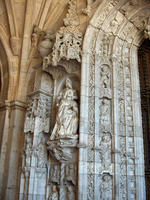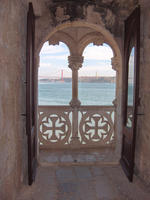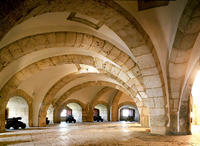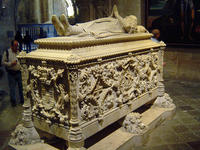You are in: Europe -> Portugal -> Monastery of the Hie... , and traditional search or Image Gallery will yield results of this site only
Monastery of the Hieronymites and Tower of Belém in Lisbon
| Site number: | 263 |
|
| Type of site: | Cultural | |
| Date: | 1502 | |
| Date of Inscription: | 1983 | |
| Location: | Europe, Portugal, City of Lisbon | |
Up to 75 images are shown here. Click on each for more details or on Image Gallery for more images.
| Description: | The construction of the Monastery of the Hieronymites began in 1502 at the entrance to Lisbon harbour; the site exemplifies Portuguese art at its best. Erected to honour Vasco da Gama's expedition, the nearby Tower of Belém is a reminder of the great maritime discoveries that laid the foundations of the modern world. --WHMNet paraphrase from the description at WHC Site, where additional information is available. | |
| The Hieronymites Monastery (Mosteiro dos Jerónimos, pron. IPA: [muʃ'tɐiɾu duʃ ʒɨ'ɾɔnimuʃ]) is located in the Belém district of Lisbon, Portugal. This magnificent monastery can be considered the most prominent monument of Lisbon and certainly the most successful achievement of the Manueline style. In 1983 it was classified by the UNESCO, with nearby Torre de Belém, as a World Heritage Site. The house for the Hieronymite monks was built on the same site of the Ermida do Restelo, a hermitage that was founded by Henry the Navigator at about 1450. It was at this hermitage, that was already in disrepair, that Vasco da Gama and his men spent the night in prayer before departing for India in 1497. Work on the vast square cloister (55 x 55 m) of the monastery was begun by Boitac. He built the groin vaults with wide arches and windows with tracery resting on delicate mullions. João de Castilho finished the construction by giving the lower storey a classical overlay and building a more recessed upper storey. The construction of such a two-storey cloister was a novelty at the time. Castilho changed the original round columns of Boitac into rectangular ones. He put Plateresque-style ornaments on it. Each wing consists of six bays with tracery vaults. The four inner bays rest on massive buttresses, forming broad arcades. The corner bays are linked by a diagonal arched construction and show the richly decorated corner pillars. One of the arcades contains the sober tomb of the poet Fernando Pessoa. There are several tombs in the chapter house : poet and playwright Almeida Garrett (1799-1854), writer-historian Alexandre Herculano (1810-1877), president Teófilo Braga (1843-1924) and president Óscar Carmona (1869-1951). The refectory across the chapter house has several azulejos tiles from the 17th century. The cloister had a religious function as well as a representative function by its decorative ornamentation and the dynastic symbolic motives, such as the armillarium, coat-of-arms, and the cross from the Order of Christ, showing the growing world power of Portugal. The church and the monastery, like the nearby Torre de Belém and Padrão dos Descobrimentos, symbolises the Portuguese Age of Discovery and is among the main tourist attractions of Lisbon. --Wikipedia. Text is available under the Creative Commons Attribution-ShareAlike License. | ||
| Source: | http://whc.unesco.org/en/list/263 | |
| Reference: | 1. UNESCO World Heritage Center, Site Page. | |






